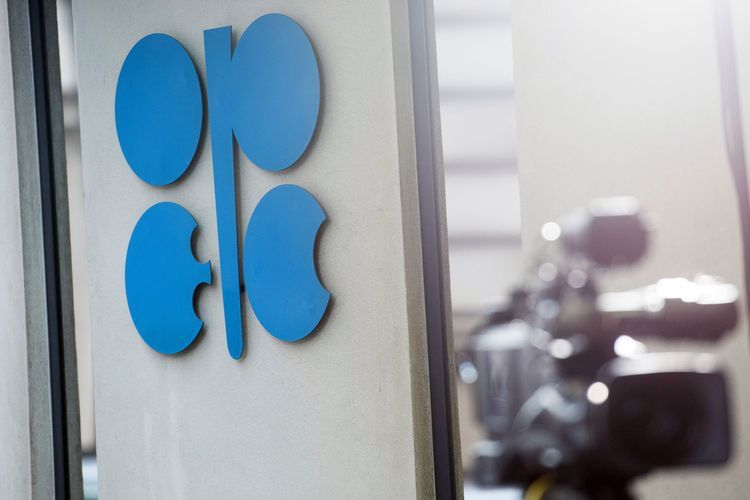
When OPEC and its allies gather this week, they’ll have the best evidence yet that their efforts to clear a global oil glut are succeeding. It may prove short-lived.
Crude prices have rebounded to a three-month high and the world’s bloated fuel inventories are shrinking, signaling that nine months of production cuts by the alliance of the Organization of Petroleum Exporting Countries and nations including Russia are at last paying off. Yet as U.S. shale oil continues to thrive and seasonal demand wanes, the surplus that has weighed on markets for three years looks set to come back.
“The strategy finally has a window of opportunity in which it can work,” said Ed Morse, head of commodities research at Citigroup Inc. in New York. Even so, “OPEC has clearly lost the long-term battle against shale.”
OPEC and Russia have spearheaded an effort to rebalance world markets, seeking to end a price rout that has battered oil producers’ economies since 2014. After production cuts as deep as 1.8 million barrels a day, a committee will review progress on Sept. 22, before ministers meet in November to decide if the strategy needs more time to achieve its goals.
As they discuss the market this week in Vienna, officials will be looking at much more favorable market indicators than at previous meetings. OPEC members are together making almost all the supply reductions they pledged, and for the first time since the agreement started in January their 10 outside partners have also delivered all of their promised cutbacks.
Positive Signs
As a result, the surplus in oil stockpiles — OPEC’s main metric for assessing the deal — has diminished. Excess inventories in developed economies, measured against their five-year average, have declined by about 74 million barrels, or 28 percent, since the start of the year, according to the International Energy Agency, which advises most major economies on energy policy.
Dwindling stockpiles are being reflected in prices. Brent crude, the international benchmark, has gained more than 20 percent since June 21 to $55.34 a barrel as of 9:20 a.m. in London. The discount on immediate supplies of Brent compared with later months — a sign of surplus that has prevailed for most of the past three years — has turned into a premium. The price of cargoes of North Sea crude such as Forties and Ekofisk rose to multiyear highs this month.
“OPEC have done very, very well — finally,” said Amrita Sen, chief oil analyst at consultant Energy Aspects Ltd. “The price of oil has recovered quite a bit, but more importantly I’d say the physical market has recovered quite substantially.”
For OPEC, this could be as good as it gets. Fuel demand is about to taper off as summer consumption of gasoline fades. Bigger problems may lie ahead in 2018 when production growth outside OPEC — led by U.S. shale — outstrips the expansion in demand and puts the market back in surplus, according to the IEA.
U.S. drillers have restored most of the output they lost during the downturn, and are on track to produce record volumes next year, the Energy Information Administration predicts. Consequently, OPEC will need to prolong the cutbacks once they expire in April to avoid oversupplying the market again, IEA forecasts for 2018 indicate.
Extending Again
The committee meeting this week won’t make a recommendation on whether to change the deal, Kuwaiti Oil Minister Issam Almarzooq said on Sept. 13. There are signs, however, that OPEC and its allies are aware that further action may be necessary, with countries considering an extension of at least three months, according to people familiar with the matter who asked not to be identified.
“A failure to commit to extending the deal beyond March would be a bearish outcome,” said Helima Croft, head of commodity strategy at RBC Capital Markets LLC. She didn’t expect a ministers to make the decision at this week’s meeting.
Deeper cuts might be necessary, IEA data suggests. If OPEC continues to produce at current rates — about 32.7 million barrels a day — global inventories will accumulate rather than diminish next year, by about 300,000 barrels a day, the agency projects.
Iraq has said there’s support for deepening the cuts by about 1 percent. It’s unclear whether the plan will be formally considered, especially since the Middle Eastern nation has mostly failed to deliver its own pledged curbs. Such a move could simply backfire by encouraging even more U.S. shale output, according to Mike Wittner, head of oil markets research at Societe Generale SA.
“All is good in the near term, with current OPEC cuts highly effective in reducing inventories,” said Bjarne Schieldrop, chief commodities analyst at SEB AB in Oslo. “We think there will be plenty of oil in 2018, though, creating the need for OPEC to hold cuts through all of next year.”
Recommended for you
